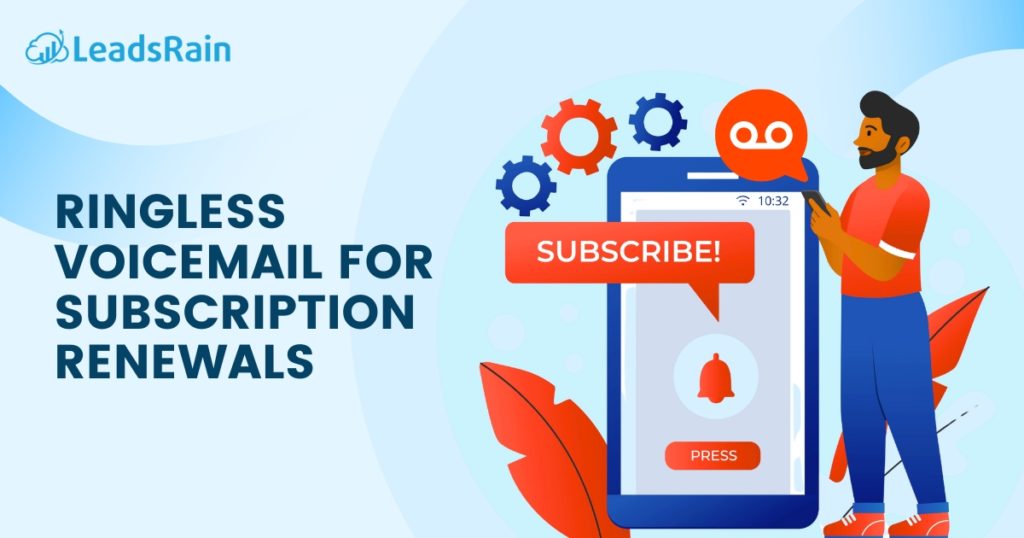Ringless voicemail (RVM) delivers pre-recorded messages directly to voicemail inboxes without ringing the recipient’s phone. This non-intrusive method is ideal for large-scale outreach, but its success depends entirely on the message content. Since there’s no live interaction, every second of the script—from the first word to the call-to-action—must be optimized to grab attention and drive response.
A/B testing makes that possible by allowing marketers to compare different versions of a voicemail script and track which one performs better. Through controlled testing and real engagement data, it becomes easier to refine tone, message length, offers, and delivery style for better results.
In this article, we’ll break down how to effectively A/B test your RVM scripts and what elements to tweak for higher response rates.
What is A/B Testing in Ringless Voicemail?
A/B testing (also called split testing) is a method of comparing two versions of a message to see which one performs better. For ringless voicemail, this means sending two different voicemail scripts (Version A and Version B) to different but similar segments of your audience and measuring which version gets more callbacks, responses, or conversions.
This process allows marketers to make data-driven decisions rather than guessing which script might perform better.
Why A/B Testing Matters in Ringless Voicemail Campaigns?
Unlike cold calling or emails, you don’t get immediate feedback from recipients with ringless voicemails. That’s why every word in your script matters.
A/B testing helps you:
- Identify which message tone performs best (casual vs. professional)
- Determine the ideal length of the voicemail
- Understand what kind of call-to-action (CTA) drives the most response
- Improve targeting by audience segment or demographic
- Maximize the ROI of your campaigns by reducing wasted outreach
Elements You Should A/B Test in Your Voicemail Scripts
Here are the most impactful components of your RVM script that you should test:
1. Opening Line
Your first few seconds are critical. Test different ways to start:
- Option A: “Hey, it’s John from SafeDrive Auto.”
- Option B: “Hi, this is John calling about your recent quote request.”
2. Tone and Personality
Try different styles:
- Professional and direct
- Friendly and conversational
- Urgent and action-driven
3. Length of Message
Test short vs. slightly longer voicemails:
- Under 20 seconds
- 20–35 seconds
Longer messages can convey more value but risk losing attention. Short messages can intrigue listeners but may lack clarity.
4. Call-to-Action (CTA)
Examples to test:
- “Call me back at [number].”
- “Visit us online to lock in your quote.”
- “Reply ‘YES’ to this number if you’re interested.”
5. Offers or Incentives
You can test:
- “Get a free quote in 60 seconds.”
- “We’re offering a 15% discount if you respond today.”
- “Only a few spots left—reserve yours now.”
6. Name or Voice Personality
Try testing a voice with different characteristics:
- Male vs. female voice
- Younger vs. mature voice
- Use of slang or local dialect for regional campaigns
If you’re using AI-generated voices, testing multiple personas can reveal powerful insights into audience preferences.
How to Run an A/B Test for Ringless Voicemail?
Here’s a basic step-by-step approach to conducting a reliable A/B test:
Step 1: Set a Clear Objective
Do you want more callbacks? Website visits? Text replies? Make sure you define what “better performance” means.
Step 2: Segment Your Audience
Divide your list into two equal, demographically similar groups. This ensures that performance differences are due to messaging, not your audience.
Step 3: Send the Voicemails
Deliver Version A to Group 1 and Version B to Group 2 using your RVM platform. Make sure you’re tracking the performance of each version separately.
Step 4: Measure the Results
Key metrics include:
- Callbacks or replies
- Conversion rates
- Voicemail listen-through rate (if available)
- Lead engagement over time
Step 5: Analyze and Apply Insights
Determine which script had better results, and try to identify why. Then use the winner as your new control message for further testing, or deploy it at scale.
Pro Tips for Successful A/B Testing of Ringless Voicemail Scripts
- Test one variable at a time: Only change one element between A and B (e.g., the CTA), so you can pinpoint what caused the difference in performance.
- Ensure statistical significance: Don’t jump to conclusions based on small sample sizes. The bigger your list, the more accurate your results.
- Document your tests: Keep a running log of tests, hypotheses, and outcomes. This will help guide future messaging strategies.
- Test continuously: Consumer behavior shifts. What worked last month might not work next quarter.
Final Thoughts
Optimizing your ringless voicemail scripts through A/B testing can lead to significant improvements in engagement, response rates, and overall campaign performance. In a space where message delivery is easy but meaningful interaction is rare, refining your approach based on real data is what separates average results from high-performing outreach.If you’re ready to take your voicemail strategy to the next level or need help setting up an effective A/B testing framework, our team is here to assist. Reach out to support@leadsrain.com – we’ll help you craft smarter, more responsive campaigns that convert.




